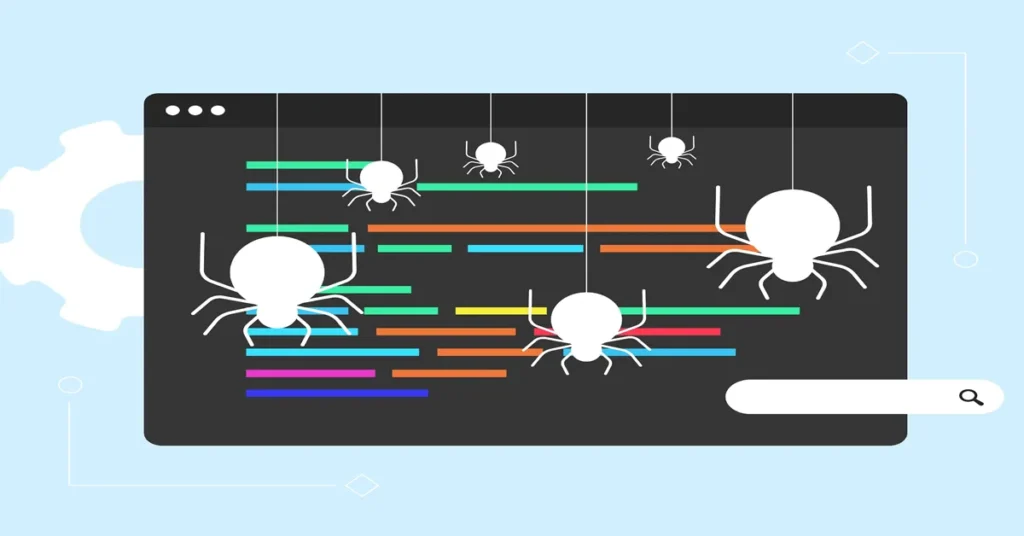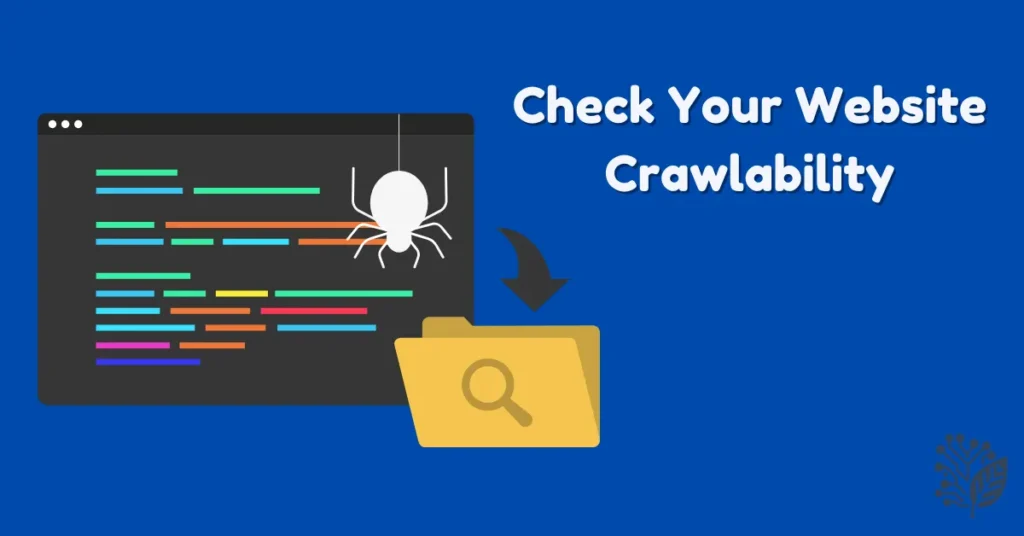Is your website being overlooked by search engines? Even if your content is top-notch, poor website crawlability might be the reason your site isn’t ranking well. In this guide, we’ll show you how to check website crawlability and identify potential issues that could be hindering your site’s performance. We’ll walk you through five simple steps to check website crawlability, ensuring Google can easily access, read, and index your pages. Addressing these issues is crucial for Technical SEO success and improving your site’s visibility.
What Is Website Crawlability?

Website crawlability is about making sure Google’s bots can easily explore and index your website. If search engines can’t crawl your site, your pages won’t be listed in search results, no matter how good they are.
The Role of Crawlers in SEO: Why Googlebot Needs Clear Paths
Search engines use bots (also called crawlers or spiders) to scan and collect information from websites. These bots need clear, unobstructed paths through your site to discover content. If these paths are blocked or poorly structured, Googlebot might miss your valuable pages.
Website Crawlability vs. Website Indexability: What’s the Difference?
- Website Crawlability is about allowing bots to access your content.
- Website Indexability is about making sure the crawled content gets stored and shown in search results.
Both must be optimized for your site to rank well.
How Poor Website Crawlability Affects Your Rankings and Visibility
If Google can’t crawl your site, it can’t index your pages, and they won’t appear in search results. This means:
- Lower visibility in search results
- Missed opportunities to rank for your target keywords
- Decreased organic traffic
Ensuring that crawlers can access your content is crucial for Technical SEO performance.
Why Website Crawlability Should Be Your First Technical SEO Check
Before you start tweaking on-page elements or building backlinks, make sure your site is crawlable. If Google can’t access your pages, all your efforts might be wasted.
Crawl Budget — Why Google Doesn’t Crawl Every Page
Google allocates a crawl budget to each site. If your site has issues like broken links, duplicate content, or low-value pages, Google might waste its crawl budget on those, leaving your most important content unindexed.
Impact of Broken Links, Loops, and Blocked Pages on Rankings
- Broken links: If bots encounter broken links, they waste time and miss other pages.
- Redirect loops: These trap crawlers in endless cycles, preventing them from indexing new content.
- Blocked pages: Pages blocked by robots.txt or other methods won’t get indexed, impacting your rankings.
Real-World Examples: Sites Fixed Crawlability and Boosted Rankings
Many websites have seen significant ranking improvements just by fixing simple crawlability issues. This could mean cleaning up broken links, correcting blocked pages, or improving your site’s internal linking structure.
5 Easy Ways to Check Website Crawlability
You don’t need to be a developer to check and fix website crawlability issues. Here are five simple methods that anyone can use.
1. Use Google Search Console’s Coverage & Page Indexing Report
Google Search Console provides detailed coverage reports that tell you which pages are indexed and which aren’t. You’ll see if your pages are:
- Crawled but not indexed: Pages Google crawled but didn’t add to search results.
- Discovered but not indexed: Pages Google knows about but hasn’t crawled yet.
Fix any errors listed in this report to ensure Google indexes the right pages.
2. Check Robots.txt File for Accidental Blocking
Your robots.txt file tells search engine bots which parts of your site to avoid. It’s critical to ensure you’re not blocking important pages by mistake. You can find it by visiting yourdomain.com/robots.txt.
Common mistakes to avoid:
- Disallow: /: This blocks the entire site from crawling.
- Incorrect syntax or case-sensitive issues: Disallow: /example could be different from disallow: /example.
3. Review Meta Robots Tags for Noindex and Nofollow Directives
Some pages may have meta robots tags that prevent indexing or following links. Use the browser’s Inspect tool to check the source code of pages and find these tags.
Key directives to look for:
- noindex: Prevents a page from being indexed.
- nofollow: Tells bots not to follow links on the page.
Ensure that pages you want indexed don’t have these tags, especially if your CMS inserts them automatically.
4. Crawl Your Website Using Screaming Frog SEO Spider (Free Version)
Screaming Frog is an SEO tool that allows you to crawl your entire site and identify issues like broken links, redirects, and orphaned pages. Here’s how to get started:
- Download Screaming Frog.
- Crawl your website.
- Look for errors such as broken links, redirect chains, and unlinked pages.
Pro tip: Use the tool to filter URLs by status codes (404, 301, 500) to quickly find problem areas.
5. Use Google’s site: Search Operator for a Quick Crawl Check
The site:yourdomain.com search operator lets you quickly check which pages Google has indexed. Simply type site:yourdomain.com into Google, and you’ll see a list of indexed pages.
What to look for:
- Missing pages: If important pages don’t show up, something is blocking them.
- Duplicate content: Sometimes Google indexes duplicate pages you don’t want to appear in search.
- Indexed junk: Check for irrelevant pages like staging sites, tag pages, or category pages.
Bonus — Mobile and JavaScript Crawlability: The Overlooked Factors
Why Mobile-First Indexing Changes Website Crawlability Priorities
Google now uses mobile-first indexing, meaning it prioritizes your mobile site for crawling and ranking. If your mobile site is difficult for search engine bots to navigate, it could negatively impact your rankings.
How to Simulate Mobile Crawling in Google Search Console’s URL Inspection Tool
Google’s URL Inspection Tool in Search Console allows you to preview how Googlebot views and crawls your site on mobile devices. Make sure your pages load and display correctly on mobile devices to avoid ranking issues.
JavaScript Rendering: Why Google May See Less Than Your Visitors Do
If your website relies heavily on JavaScript for content, Google may not see it the way your visitors do. Use tools like Screaming Frog to check how Google renders JavaScript on your site.
How to Fix Website Crawlability Issues (Permanent Solutions)
Once you’ve identified website crawlability issues, here’s how to fix them for good.
Clean Up Broken Links and Redirect Chains
Fix any broken links or redirect loops that prevent crawlers from accessing content. Use Google Search Console or Screaming Frog to find and repair them.
Optimize Robots.txt for Balance — Block What Matters, Not Everything
Don’t block entire sections of your site with robots.txt. Only block low-value pages like admin pages or privacy policies.
Use Internal Linking to Guide Googlebots Efficiently
Googlebot uses internal links to navigate your site. Ensure that key pages are linked from other pages, helping bots discover all important content.
Ensure Every Important Page is Linked from Another Page
Pages with no internal links are harder for Googlebot to find. Ensure that every important page has at least one link from another page on your site.
Regularly Update and Submit Your XML Sitemap
An updated XML sitemap ensures that Google knows about your latest pages. Submit it through Google Search Console to keep everything indexed.
Pro-Level Crawlability Tools Worth Knowing
Here are some tools that can help you track and fix crawlability issues:
- Google Search Console: Essential and free for monitoring crawlability.
- Screaming Frog SEO Spider: Great for deep site audits and spotting issues.
- Sitebulb: Offers visual crawl audits with clear insights.
- Ahrefs Site Audit: Comprehensive site audit tool with advanced features.
- SEMrush Site Audit: Beginner-friendly with detailed crawl data.
Final Thoughts
Crawlability issues may seem minor, but they can have a huge impact on your SEO performance. Regularly check for broken links, blocked pages, and optimize your internal linking to ensure that search engines can find, read, and index your content. Combine great crawlability with high-quality content, and you’ll be set up for long-term SEO success.
FAQs
How often should I check my website’s crawlability?
Check it at least once a month, or after any major changes to your site.
Is website crawlability the same as indexability?
No. Crawlability is about access, while indexability is about being stored and shown in search results.
Can crawlability problems stop my site from ranking on Google?
Yes. If Google can’t crawl your pages, they can’t rank in search results.
What’s the easiest way to fix website crawlability without coding?
Start by reviewing your Google Search Console reports, robots.txt file, and XML sitemap. These tools are easy to use and don’t need any coding knowledge.
Should I prioritize desktop or mobile crawlability first?
Mobile-first indexing means you should prioritize mobile crawlability.







